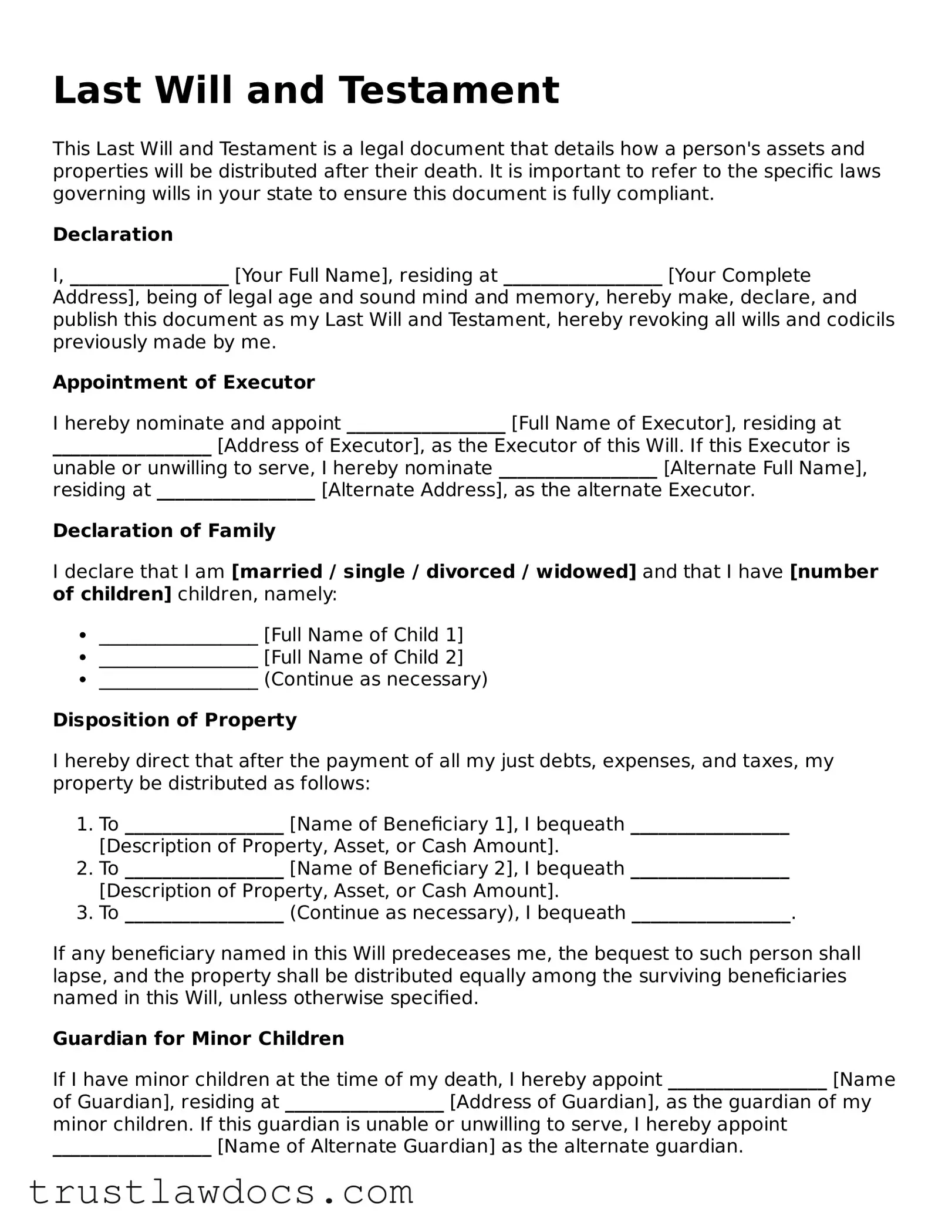Last Will and Testament
This Last Will and Testament is a legal document that details how a person's assets and properties will be distributed after their death. It is important to refer to the specific laws governing wills in your state to ensure this document is fully compliant.
Declaration
I, _________________ [Your Full Name], residing at _________________ [Your Complete Address], being of legal age and sound mind and memory, hereby make, declare, and publish this document as my Last Will and Testament, hereby revoking all wills and codicils previously made by me.
Appointment of Executor
I hereby nominate and appoint _________________ [Full Name of Executor], residing at _________________ [Address of Executor], as the Executor of this Will. If this Executor is unable or unwilling to serve, I hereby nominate _________________ [Alternate Full Name], residing at _________________ [Alternate Address], as the alternate Executor.
Declaration of Family
I declare that I am [married / single / divorced / widowed] and that I have [number of children] children, namely:
- _________________ [Full Name of Child 1]
- _________________ [Full Name of Child 2]
- _________________ (Continue as necessary)
Disposition of Property
I hereby direct that after the payment of all my just debts, expenses, and taxes, my property be distributed as follows:
- To _________________ [Name of Beneficiary 1], I bequeath _________________ [Description of Property, Asset, or Cash Amount].
- To _________________ [Name of Beneficiary 2], I bequeath _________________ [Description of Property, Asset, or Cash Amount].
- To _________________ (Continue as necessary), I bequeath _________________.
If any beneficiary named in this Will predeceases me, the bequest to such person shall lapse, and the property shall be distributed equally among the surviving beneficiaries named in this Will, unless otherwise specified.
Guardian for Minor Children
If I have minor children at the time of my death, I hereby appoint _________________ [Name of Guardian], residing at _________________ [Address of Guardian], as the guardian of my minor children. If this guardian is unable or unwilling to serve, I hereby appoint _________________ [Name of Alternate Guardian] as the alternate guardian.
Signatures
This Will shall be effective only upon my death and after it is signed in the presence of witnesses. To validate this Will, it must be signed by me or at my direction and acknowledged by me in the presence of two witnesses, who must also sign this Will in my presence.
In witness whereof, I have hereunto set my hand and seal this ____ day of ____, 20____.
__________________________________
[Your Signature]
__________________________________
[Witness 1 Name and Signature]
__________________________________
[Witness 2 Name and Signature]
